Essential Guide to Memory Cards
Memory Cards for Digital Cameras: A Detailed Guide
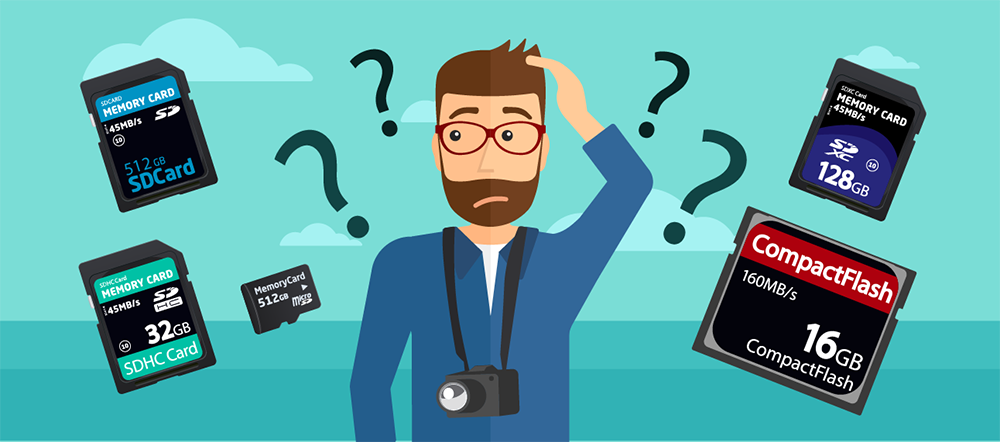
Photography is a hobby that matches technology with talent – pairing the increasingly complicated technology going into our cameras with the skills of a photographer. Cameras have always been intricate machines, but since the dawn of the digital age, the understanding you need in order to get the most from your photos has only increased.
One of the aspects most photographers fail to consider is the memory card that goes into a device. Far from a simple piece of storage media, the SD card you choose can actually affect the outcome of your photography. Here’s our detailed explanation to the varying types on offer:
Major Memory – Formats Explained
The following cards all fit into a standard ‘SD’ card slot:
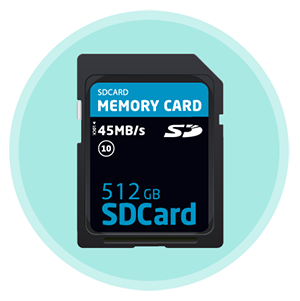 SD Cards: These are the most common type of card – the kind you’ll see on the shelves of supermarkets and available online. The name stands for ‘Secure Digital’, which are compatible with the majority of cameras. SD cards are still a ‘beginner’ option, providing a maximum of 2GB capacity and a 2MB/s read speed.
SD Cards: These are the most common type of card – the kind you’ll see on the shelves of supermarkets and available online. The name stands for ‘Secure Digital’, which are compatible with the majority of cameras. SD cards are still a ‘beginner’ option, providing a maximum of 2GB capacity and a 2MB/s read speed.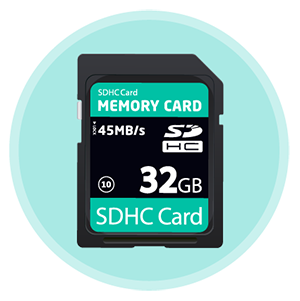 SDHC Cards: Standing for ‘Secure Digital High Capacity’, these cards were released after SD cards to offer higher storage capacity – originally up to 32 GB but this number now varies. Older cameras might not recognise this card, so check in advance. Now, you’ll find SDHC offering up to 64GB capacity and read speeds of 24MB/s.
SDHC Cards: Standing for ‘Secure Digital High Capacity’, these cards were released after SD cards to offer higher storage capacity – originally up to 32 GB but this number now varies. Older cameras might not recognise this card, so check in advance. Now, you’ll find SDHC offering up to 64GB capacity and read speeds of 24MB/s.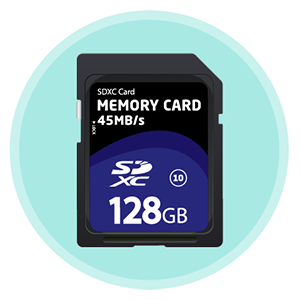
The following are specialist cards favoured for specific purposes:
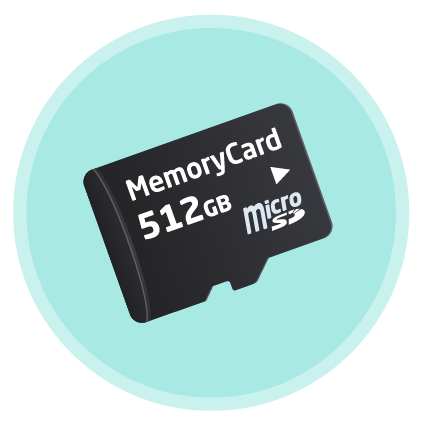 Micro SD: Similar to an SD card, but available in miniature, these are the cards favoured by mobile phones and a select range of compacts. You can read these cards using an SD card reader if you buy an adaptor – but this is merely for viewing and editing photos.
Micro SD: Similar to an SD card, but available in miniature, these are the cards favoured by mobile phones and a select range of compacts. You can read these cards using an SD card reader if you buy an adaptor – but this is merely for viewing and editing photos.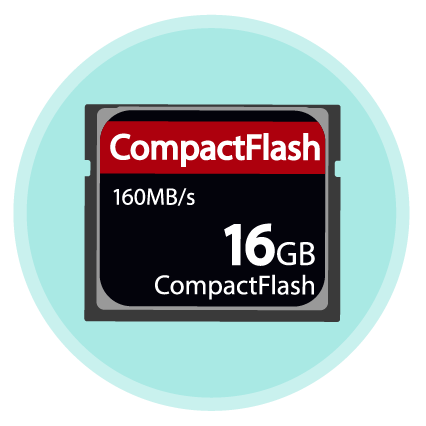 CompactFlash (CF): These are the most advanced memory cards available, offering high resolution capture at fast frame rates, whilst also delivering higher capacity and speed. However, there are many that offer less storage than an equivalent SD.
CompactFlash (CF): These are the most advanced memory cards available, offering high resolution capture at fast frame rates, whilst also delivering higher capacity and speed. However, there are many that offer less storage than an equivalent SD.
First you’ll need to consider your camera’s actual shooting format. Higher megapixel images will demand more storage. For example, the entry-level 18MP Canon 1300D will use less space per photo than a 24.2 MP Canon 80D. Actually working out how much space a shot will take depends on how the camera can compress the file. This generally breaks down as follows:
- An uncompressed RAW file is double the megapixel count. E.G, a 24MP image will be 48MB per file.
- A compressed RAW image will be almost the same as the MP count. E.G, a 24MP image will 24MB.
- JPEG files at full resolution will be half the megapixels. E.G A JPEG at 24MP will be 12MB.
This is estimation only, which will vary depending on the quality settings you choose. The only way to know how many photos you’ll fit on a camera is by inserting the card, picking the quality settings and seeing how many shots remain. However, to help you buy a card, here’s a simple table of estimations:
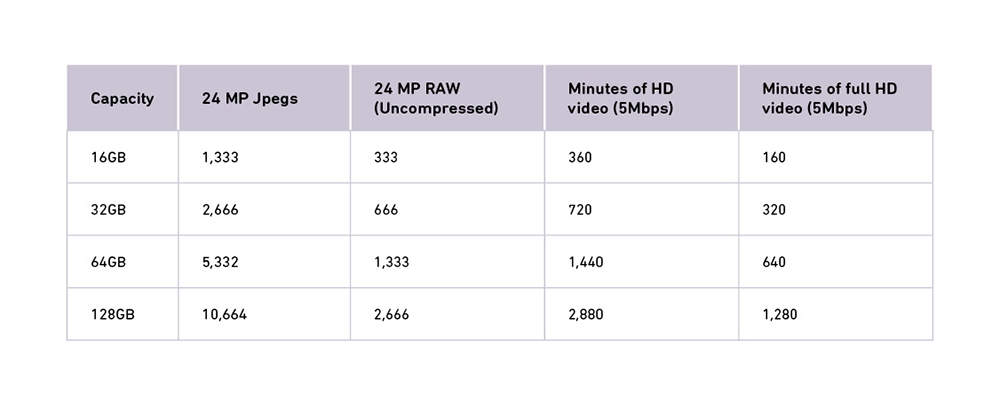
Card speed
Presumably, if you’re visiting the Clifton Cameras site, you’re here to take better photos and buy good equipment. As such, low-quality cards won’t cut it for your purpose. Even if you know you’re only going to shoot less than 100 photos, it’s generally better to buy a higher capacity card, as they carry higher speeds.
Read speed: This is how fast data is read from a card, which is important when you’re transferring files to your PC.
Write speed: This is the stat of interest to professional photographers, as it refers to the amount of time it takes for a file to be written to the SD Card. This is vital when you’re shooting burst photos or high-quality video.
The way memory cards present their speeds to a user is different, but many use the ‘class’ function – which refers to their speed and generally ranges from Class 2 up to Class 10 – with the latter offering 10MB/sec write speed. They also sometimes use UHS speed numbers, which are higher.
CompactFlash (CF) cards offer a UDMA rating, which gives increased speed but is capped by the ability of your camera.
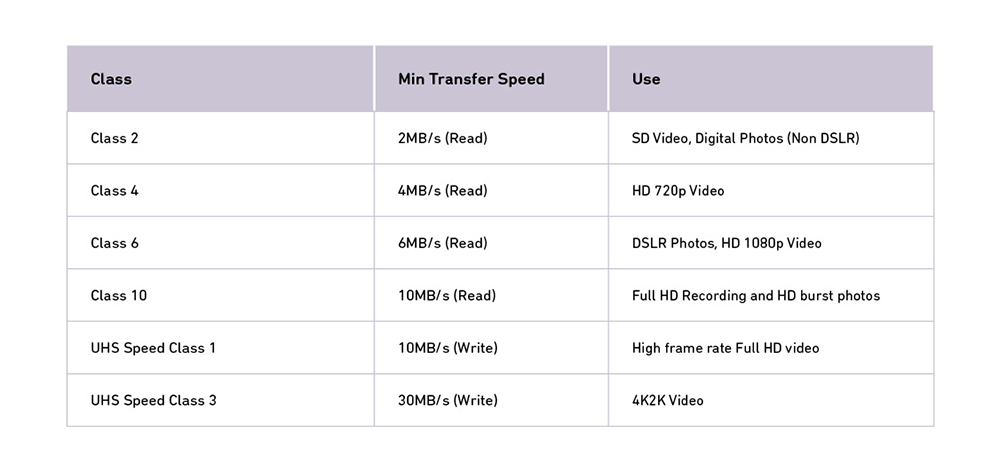

Which card is right for me?
If you’re a photographer wanting to capture fast moving photos at high definition, you’ll want faster speeds. Ultimately, you should choose a card you can afford that offers the best quality available. Faster read speeds mean less time editing, while a quick write speed will help you take advantage of every shot.
However, unless you’re a professional, the advancements in SDHC technology mean that most cards 32GB and beyond will suit your day-to-day photography needs. If you’re shooting in JPEG, you’ll need even less space than that. Match the card to the camera and intended use. Just as you wouldn’t put a Lada engine in a Ferrari, you wouldn’t put a Class 4 SD card in a full-frame, 24MP DSLR.
Take a look at Clifton Camera’s full range of memory cards here, and purchase the one that fits your needs.
- By Matthew Ward
- 8 Dec 2016



































































